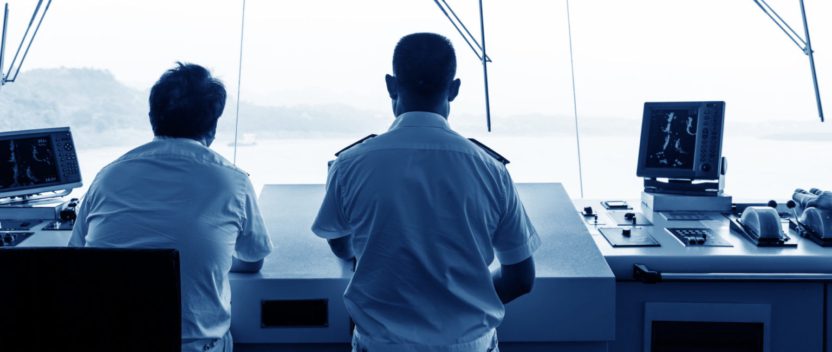ECDIS: from problem to solution?
In a series of blogs last autumn, we asked why ECDIS still appears to be causing serving navigators so many operational problems, so long after the technology was introduced. The answers are numerous, ranging beyond training and familiarisation to operator interaction with hardware and software.
We were keen to include the views of an OEM, and Northrop Grumman Sperry Marine declared itself willing to answer some challenging questions: why do navigators struggle with the ECDIS interface, can standardisation be improved, what about S-Mode and what will the future look like?
In terms of how to make the ECDIS interface better for users, Simon Cooke, Technical Manager, says the Sperry position is “that it is essential to have navigators involved in the ECDIS design to ensure that manufacturers are meeting their needs.”
Sperry Marine holds regular forums with just this objective in mind and brings together diverse market participants including navigators to provide relevant input. Cooke says the direction of travel towards eNavigation is one that must reduce the navigator’s workload. “eNavigation will bring new products, capabilities and services but we must make sure human factors are taken into account.”
The key it seems is not to reinvent ECDIS, but rather use a natural upgrade path. “For sure, ECDIS will meet needs of mariners if it evolves over time to new requirements,” adds Riccardo Varrazza, Commercial Products Manager. “ECDIS, together with the radar (ARPA), is becoming one of the key instruments used for efficient and reliable navigation and, if the manufacturers keep investing, then it will work for them.”
Cooke agrees that pragmatism is needed. Navigators urge caution over future development; simply adding more and more information overlays isn’t necessarily the right way to go. To avoid being swamped by information, it needs to be managed, using and presenting it in a task-oriented way.
This would all be very well if there were only one or two types of ECDIS rather than the dozens available. Trainees too often complain of lack of standardisation or that the ship they join doesn’t have the ECDIS they have been training for.
“We understand the concern and we accept it’s a valid one,” says Cooke. “But there has been significant standardisation in recent years in terms of user interface displays and controls across the different manufacturers.”
There have been other collective developments – by manufacturers through CIRM and together with the IMO and IEC – attempting to respond to the lack of standardisation and the strain this can put on Type Specific training.
What no OEM can control is the length of time it takes for shipowners, having invested in ECDIS, to update their equipment. Cooke says the user interface improvements manufacturers have made take time to be seen in the field.
“Whilst manufacturers redesign their systems when, say, the IEC publishes a new standard, vessel operators are not mandated to update equipment in the field. This may mean that some of the usability feedback the industry receives is based on experience from equipment that hasn’t yet benefitted from that standardisation process.”
This will change somewhat as the IHO’s S-52 presentation library rolls out across the fleet before the mandatory adoption date by the end of August this year. The new standard will require vessel operators to update their ECDIS systems in a way they haven’t had to in the past.
What it won’t be is S-Mode – the ‘re-set’ switch that the Nautical Institute and others have been advocating. Cooke says Sperry is not convinced that another mode to switch into is the best way of addressing system complexity.
Instead, he says, an ‘always-on’ S-Mode that standardises default control settings, terminology, abbreviations and save and recall functionality might be a better alternative to address the human factor issues without the risk of constraining innovation.
“Thinking about what is being proposed in future around eNavigation, we agree changes will be needed. But do the navigators really think that menu hierarchies defined by committees is the best way of addressing their problems? I think they might have concerns with that approach,” he adds with some understatement.
Perhaps then human-centred design is the magic bullet that improves ECDIS usability? Varrazza agrees, up to a point. “Ship bridges are changing as manpower levels are changing so the human interface is very important, but it’s not going to solve any problems unless it is for the benefit of the navigator.”
“If it doesn’t improve the quality of navigation then it is only done for the sake of the engineering. The focus for us is always to talk with navigators to convert our ideas and their feedback into something that really works, rather than putting something there that is not used.”
Thinking about the future is important at a time when smart shipping is being touted as a solution to current challenges and a means of accelerating technology take-up. Some of the corporate videos look very slick but James Collett, Commercial Director, thinks the transition will also have to address some of the existing operational concerns.
“Our concept of the future bridge system begins to make the link between an IMO-compliant ECDIS front of bridge and an enhanced back of bridge capability, where it is more practical to download and manipulate charting data and do voyage planning,” he says.
This fits with the trajectory of eNavigation in making the front of bridge ‘lighter touch’ but allowing the mariner to focus on their primary tasks, improving and evolving the configuration the industry is used to, he explains. It also takes into account the fact that the majority of the world’s fleet is, and will remain, workhorses rather than thoroughbreds.
“The true benefits of the link to shore and being able to download the ENCs you need will be very much back of bridge. That allows you to plan and prepare, touch an icon and the voyage is transferred to the ECDIS,” he explains. “The maritime industry will get to the future eventually, just maybe not as quickly as some people seem to think.”


